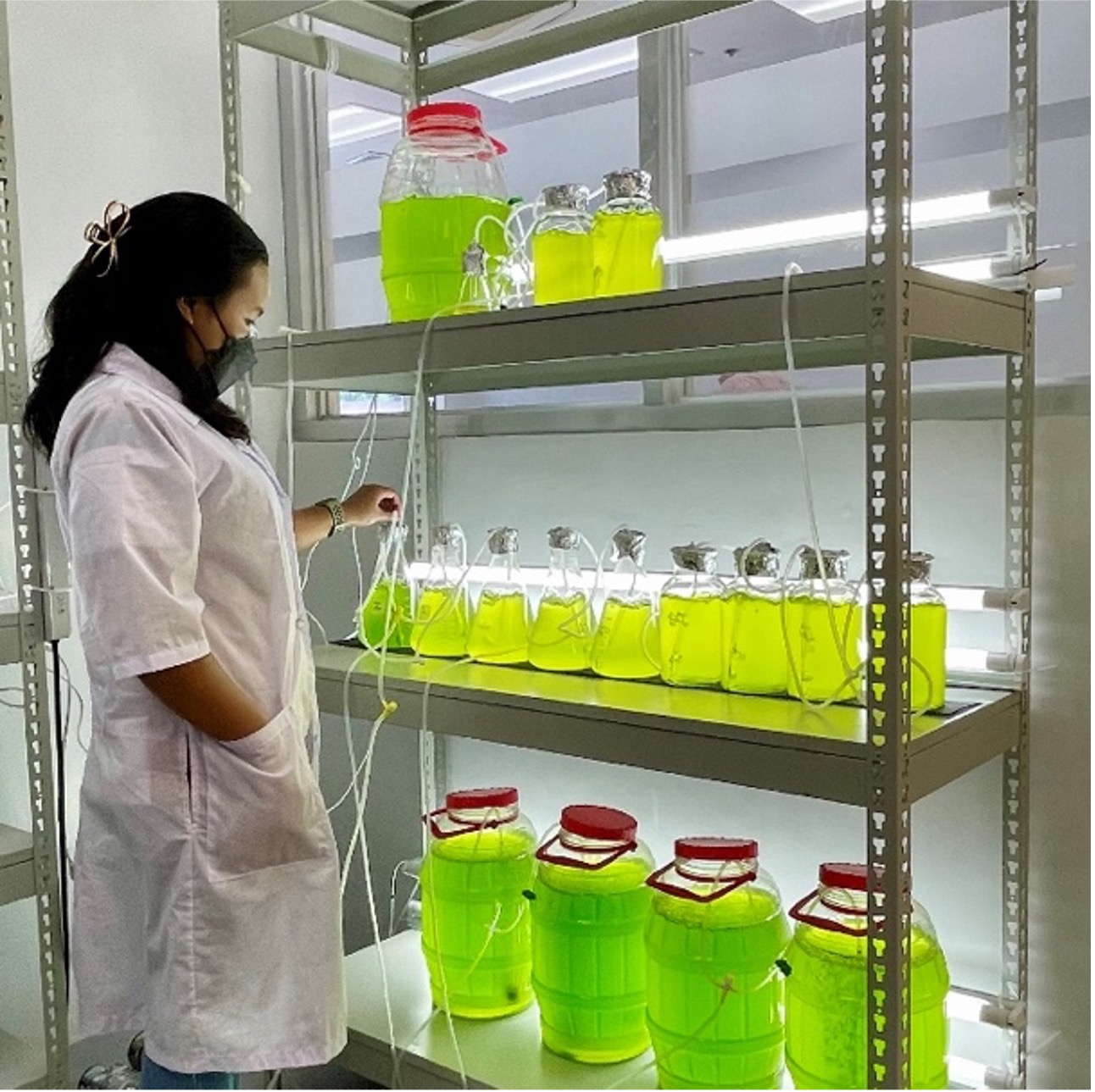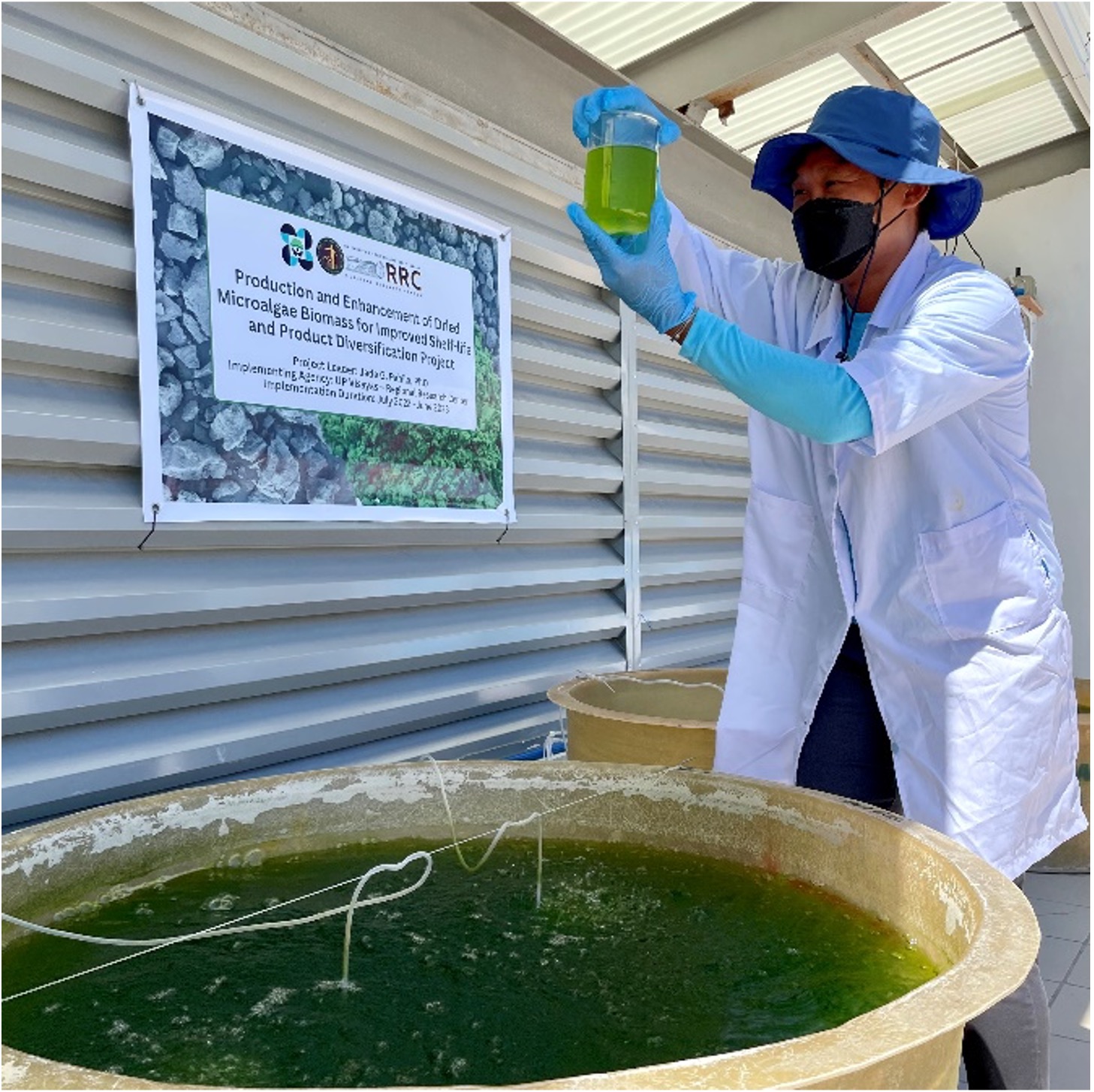Microalgae as aquafeeds can soon be transported and distributed easily with longer and more stable shelf-life.
Microalgae are advantageous in a wide range of applications. However, relatively few extensive investigations on their postharvest development and other functionality aspects have been undertaken.
According to the Philippine Council for Agriculture, Aquatic and Natural Resource Research and Development of the Department of Science and Technology (DOST-PCAARRD), maintaining microalgal postharvest quality is one of the issues that local producers face. The high moisture content and nutrient-rich media in fresh and paste form make it susceptible to fast degradation. DOST-PCAARRD adds that to keep it fresh, it needs to be stored in refrigerated temperature and storage life varies depending on the harvesting method. Improper storage of supplies could lead to deterioration and wastage.

Indoor culture of Chlorella sp.
To address this, the University of the Philippines Visayas (UPV) is researching on the optimization of postharvest protocols of microalgae for improved shelf-life and product diversification under the leadership of Dr. Jade Pahila, University Researcher of UPV’s Regional Research Center.
Funded by DOST-PCAARRD, the project aims to produce shelf-stable and low-moisture microalgae that could be used as aquafeeds. These properties will also allow easier transport and distribution to various beneficiaries and stakeholders due to its lightweight composition and low maintenance storage requirements.
The project found that with the optimized postharvest processing protocols, periods of sunny weather may be taken advantage of to produce volumes of microalgae for later processing into a more stable form for longer storage without worrying about its spoilage if not used or consumed right away. During unfavorable weather conditions, processed microalgae may be taken out from the shelf to be used anytime instead of the fresh form.
This product hopes to benefit both microalgae producers and aquaculture farm operators.

